
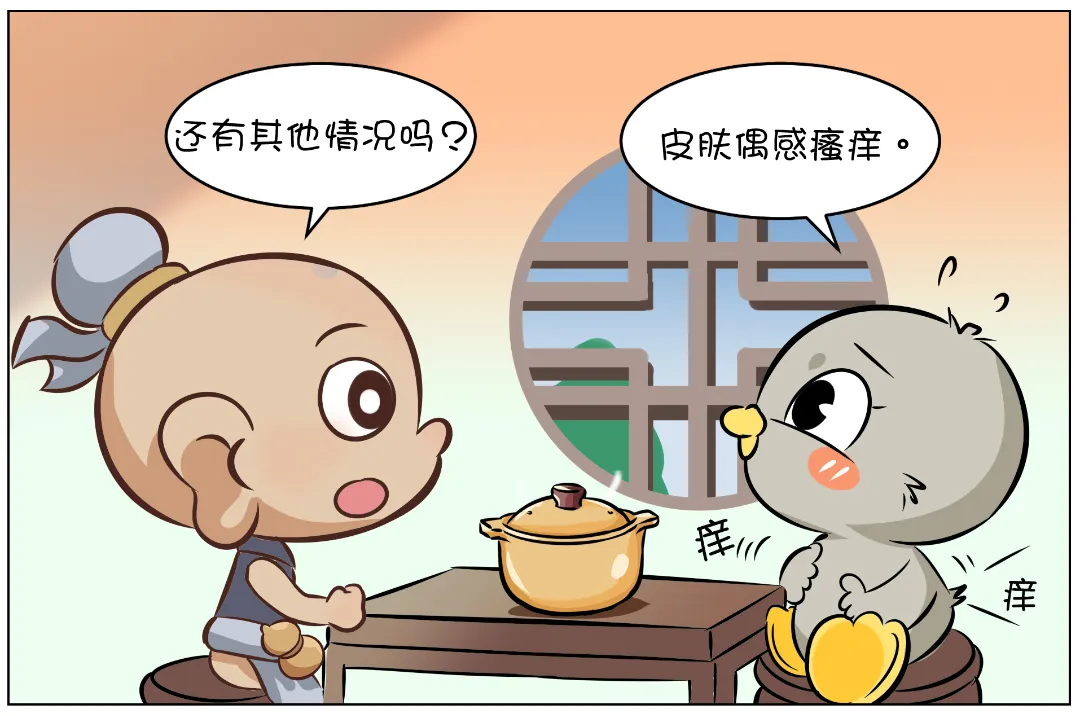
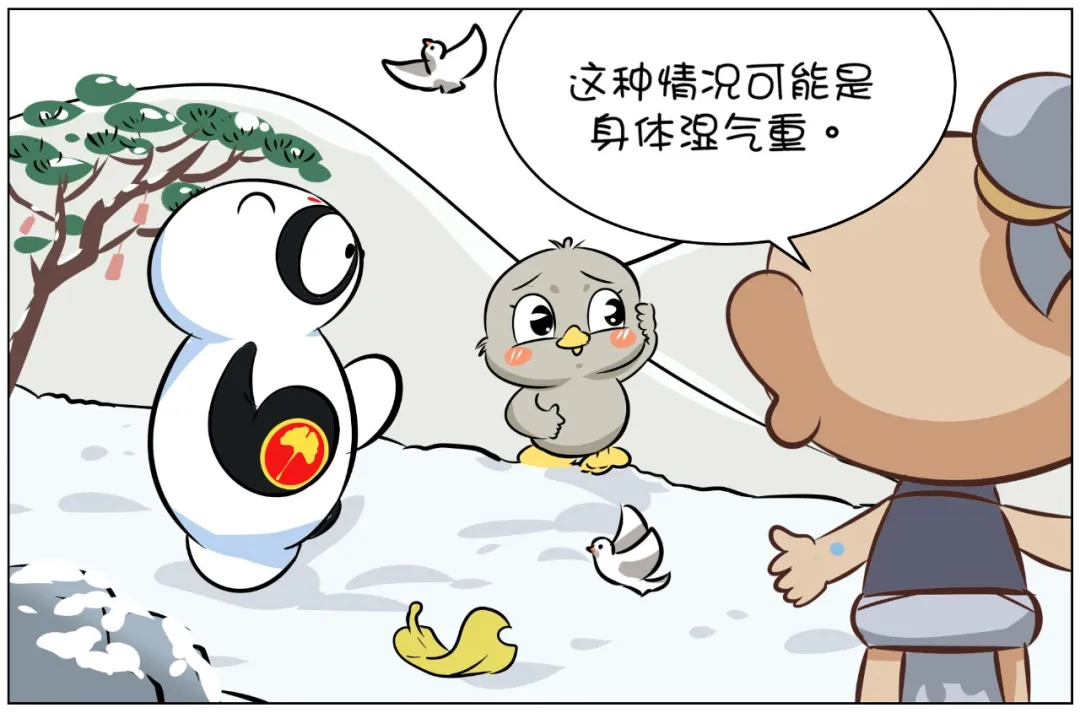
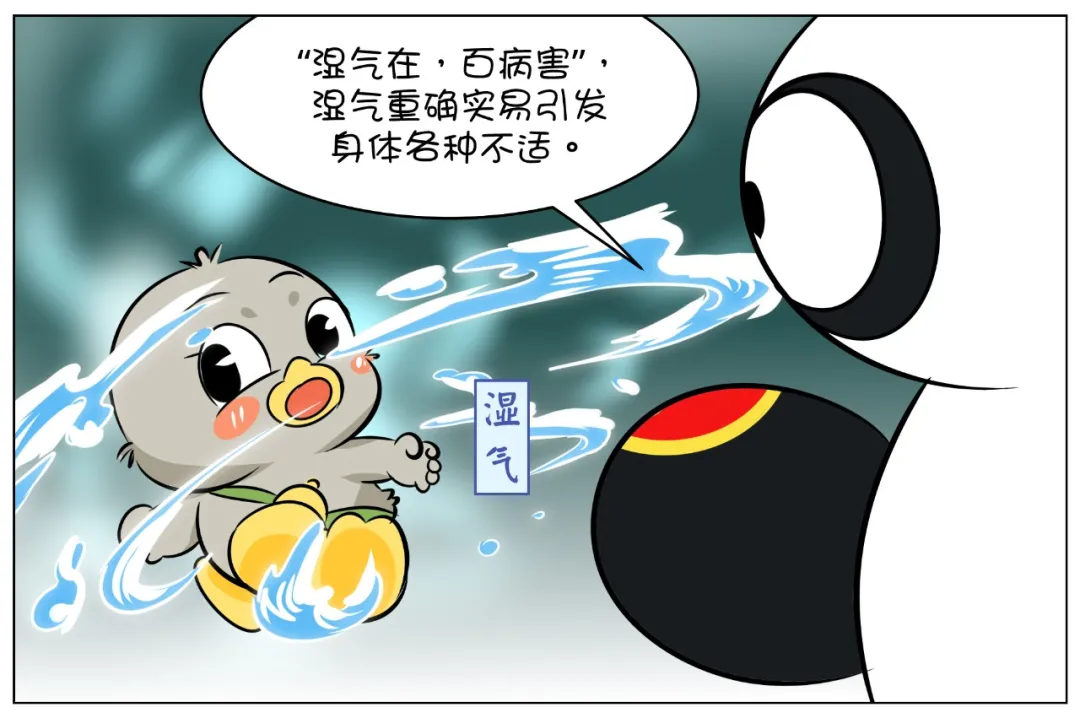
Dampness is one of the six external pathogens. Excessive dampness in the body can lead to stagnation in specific areas, resulting in the spleen’s inability to function properly, which can cause symptoms such as fatigue, heaviness in the head, and heaviness in the limbs. Traditional Chinese Medicine (TCM) recognizes that dampness can be categorized into internal and external dampness. Although the causes differ, they often influence each other.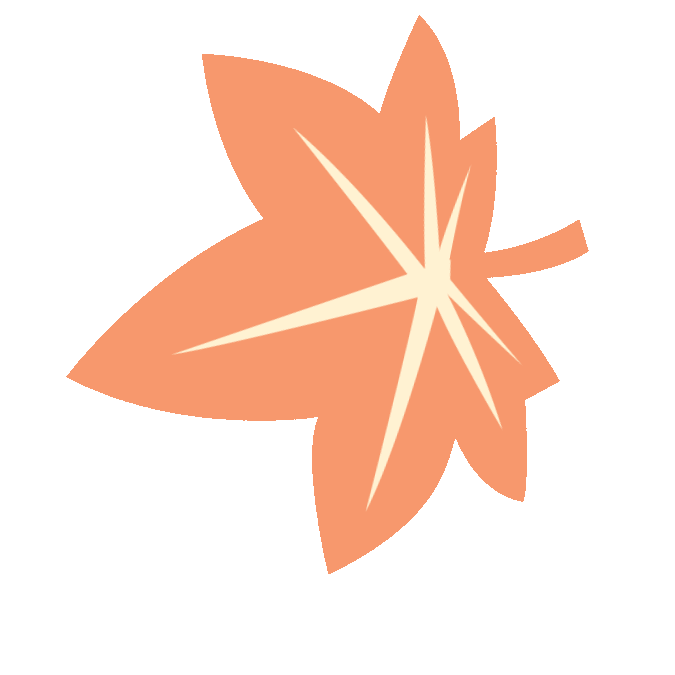
Causes of Dampness
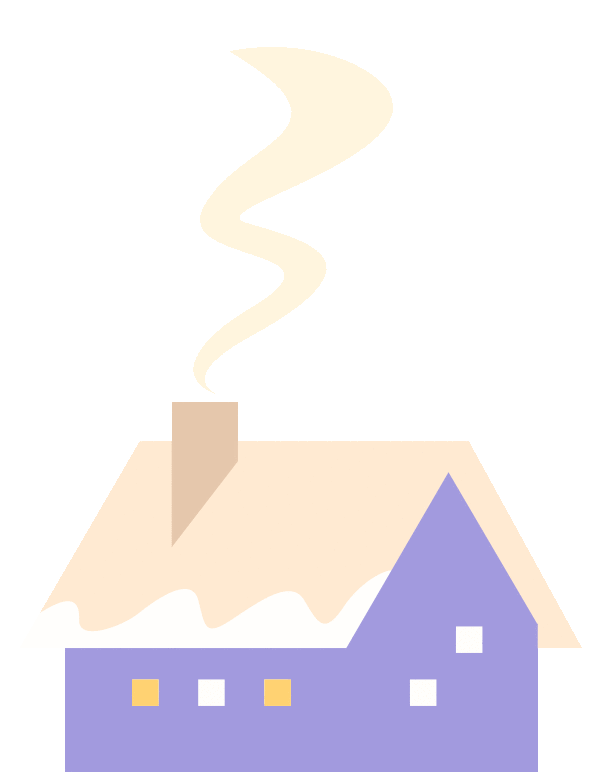
 Internal Dampness can arise from improper diet, such as excessive consumption of sweet foods, overindulgence in alcohol, irregular eating patterns, or consuming cold foods and drinks, which can damage the spleen and stomach. When the spleen and stomach are impaired, the functions of fluid metabolism and distribution become abnormal, leading to the generation of internal dampness. The formation of internal dampness is also related to dysfunctions of the lungs and kidneys.
Internal Dampness can arise from improper diet, such as excessive consumption of sweet foods, overindulgence in alcohol, irregular eating patterns, or consuming cold foods and drinks, which can damage the spleen and stomach. When the spleen and stomach are impaired, the functions of fluid metabolism and distribution become abnormal, leading to the generation of internal dampness. The formation of internal dampness is also related to dysfunctions of the lungs and kidneys.
 External Dampness can occur due to prolonged exposure to rainy weather, living in damp environments, or engaging in water-related activities without proper protection, as well as not changing clothes promptly after sweating, which can allow external dampness to invade the body.
External Dampness can occur due to prolonged exposure to rainy weather, living in damp environments, or engaging in water-related activities without proper protection, as well as not changing clothes promptly after sweating, which can allow external dampness to invade the body.
Six Methods to Treat Dampness in TCM
 There are six common methods in TCM to treat dampness: 1. Transform Dampness: Commonly used herbs include Peilan (Eupatorium aromaticum), Huo Xiang (Agastache rugosa), Bai Dou Kou (White Cardamom), and Pao Jiang (Dried Ginger), which are aromatic and help to transform dampness.2. Promote Dampness Elimination: Commonly used herbs include Bai Zhu (White Atractylodes), Fu Ling (Poria), and Yin Chen (Artemisia capillaris), which have diuretic properties.3. Drain Dampness: Commonly used herbs include Yi Yi Ren (Job’s Tears), Zhu Ling (Polyporus), and Di Fu Zi (Kochia scoparia), which promote metabolism.4. Dry Dampness: Commonly used herbs include Cang Zhu (Atractylodes lancea), Hou Po (Magnolia Bark), Huang Bai (Phellodendron), and Gui Zhi (Cinnamon Twig), which are mild drying agents.5. Constrain Dampness: Commonly used herbs include Hai Piao Xiao (Cuttlefish Bone) and Huang Bai (Phellodendron), which help to consolidate dampness and promote tissue regeneration.6. Overcome Dampness: Commonly used herbs include Fang Feng (Saposhnikovia divaricata) and Bai Zhi (Angelica dahurica), which dispel wind and eliminate pathogens.
There are six common methods in TCM to treat dampness: 1. Transform Dampness: Commonly used herbs include Peilan (Eupatorium aromaticum), Huo Xiang (Agastache rugosa), Bai Dou Kou (White Cardamom), and Pao Jiang (Dried Ginger), which are aromatic and help to transform dampness.2. Promote Dampness Elimination: Commonly used herbs include Bai Zhu (White Atractylodes), Fu Ling (Poria), and Yin Chen (Artemisia capillaris), which have diuretic properties.3. Drain Dampness: Commonly used herbs include Yi Yi Ren (Job’s Tears), Zhu Ling (Polyporus), and Di Fu Zi (Kochia scoparia), which promote metabolism.4. Dry Dampness: Commonly used herbs include Cang Zhu (Atractylodes lancea), Hou Po (Magnolia Bark), Huang Bai (Phellodendron), and Gui Zhi (Cinnamon Twig), which are mild drying agents.5. Constrain Dampness: Commonly used herbs include Hai Piao Xiao (Cuttlefish Bone) and Huang Bai (Phellodendron), which help to consolidate dampness and promote tissue regeneration.6. Overcome Dampness: Commonly used herbs include Fang Feng (Saposhnikovia divaricata) and Bai Zhi (Angelica dahurica), which dispel wind and eliminate pathogens. Individuals with excessive dampness can be categorized into damp-heat constitution and cold-damp constitution. Damp-heat patients often exhibit oily skin, frequent urination, urgent urination, and yellow urine. Cold-damp patients often experience chills, diarrhea, and clear, prolonged urination. Different constitutions require different treatment methods, necessitating pattern differentiation treatment.
Individuals with excessive dampness can be categorized into damp-heat constitution and cold-damp constitution. Damp-heat patients often exhibit oily skin, frequent urination, urgent urination, and yellow urine. Cold-damp patients often experience chills, diarrhea, and clear, prolonged urination. Different constitutions require different treatment methods, necessitating pattern differentiation treatment.
External Treatments for Dampness in TCM

 Moxibustion: Cold-damp patients can use moxibustion on points such as Zu San Li (ST36), Guan Yuan (CV4), Ming Men (GV4), and Zhong Wan (CV12) for 15-20 minutes daily to warm yang and disperse cold, and eliminate dampness. Damp-heat patients can use moxibustion on points such as Qu Chi (LI11), He Gu (LI4), Yin Ling Quan (SP9), and Feng Long (ST40) for 5-8 minutes daily to clear heat and promote dampness elimination. The duration of moxibustion should not be excessive. During moxibustion, it is important to keep warm and avoid wind exposure. Do not bathe or expose yourself to cold air immediately after moxibustion.
Moxibustion: Cold-damp patients can use moxibustion on points such as Zu San Li (ST36), Guan Yuan (CV4), Ming Men (GV4), and Zhong Wan (CV12) for 15-20 minutes daily to warm yang and disperse cold, and eliminate dampness. Damp-heat patients can use moxibustion on points such as Qu Chi (LI11), He Gu (LI4), Yin Ling Quan (SP9), and Feng Long (ST40) for 5-8 minutes daily to clear heat and promote dampness elimination. The duration of moxibustion should not be excessive. During moxibustion, it is important to keep warm and avoid wind exposure. Do not bathe or expose yourself to cold air immediately after moxibustion.
 Acupressure: Cold-damp patients can massage points such as Zu San Li (ST36), Yin Ling Quan (SP9), and San Yin Jiao (SP6); damp-heat patients can massage points such as Qu Chi (LI11), He Gu (LI4), and Yin Ling Quan (SP9), and Tai Chong (LR3). Massage each point for 5 minutes daily with moderate pressure, aiming for a sensation of soreness and distension.
Acupressure: Cold-damp patients can massage points such as Zu San Li (ST36), Yin Ling Quan (SP9), and San Yin Jiao (SP6); damp-heat patients can massage points such as Qu Chi (LI11), He Gu (LI4), and Yin Ling Quan (SP9), and Tai Chong (LR3). Massage each point for 5 minutes daily with moderate pressure, aiming for a sensation of soreness and distension.

 Foot Bath
Foot Bath
Cold-damp patients can use ginger (3-5 slices), mugwort (8g), and pepper (10g) for foot baths; damp-heat patients can use Huang Bai (Phellodendron, 10g), Ku Shen (Sophora flavescens, 10g), and Yi Yi Ren (Job’s Tears, 20g) to prepare foot baths. The water temperature should be around 40°C, and soak for 15-20 minutes. After soaking, dry your feet promptly, keep warm, and avoid getting cold.

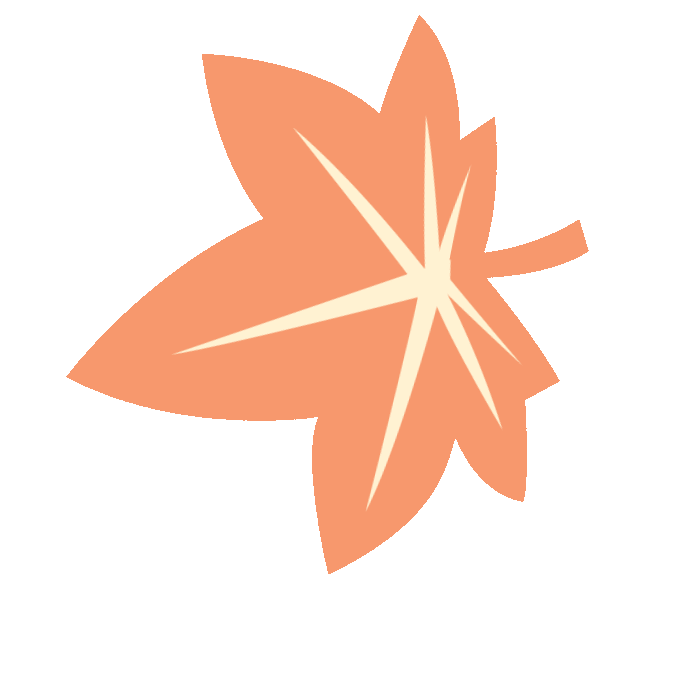
Lifestyle Adjustments
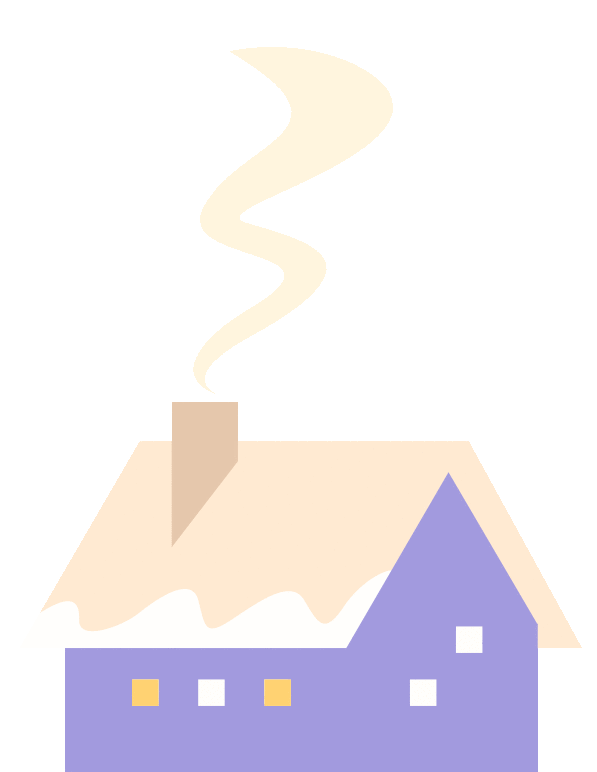
 Herbal Teas: Cold-damp patients should focus on warming yang and transforming dampness, consuming teas such as ginger and brown sugar tea and Chen Pi Pu-erh tea, which warm the center, disperse cold, and strengthen the spleen to transform dampness.Ginger and Brown Sugar Tea: 3 slices of ginger, appropriate amount of brown sugar, steep in hot water.Chen Pi Pu-erh Tea: 10g of Chen Pi, appropriate amount of Pu-erh tea, steep in hot water. Damp-heat patients should focus on clearing heat and transforming dampness, consuming teas such as lotus leaf tea and Yi Yi Ren and red bean tea, which clear heat, promote dampness elimination, and strengthen the spleen.Lotus Leaf Tea: 3g of lotus leaf, boiled in water for drinking.Yi Yi Ren and Red Bean Tea: 10g of Yi Yi Ren, 10g of red beans, boiled in water for drinking..
Herbal Teas: Cold-damp patients should focus on warming yang and transforming dampness, consuming teas such as ginger and brown sugar tea and Chen Pi Pu-erh tea, which warm the center, disperse cold, and strengthen the spleen to transform dampness.Ginger and Brown Sugar Tea: 3 slices of ginger, appropriate amount of brown sugar, steep in hot water.Chen Pi Pu-erh Tea: 10g of Chen Pi, appropriate amount of Pu-erh tea, steep in hot water. Damp-heat patients should focus on clearing heat and transforming dampness, consuming teas such as lotus leaf tea and Yi Yi Ren and red bean tea, which clear heat, promote dampness elimination, and strengthen the spleen.Lotus Leaf Tea: 3g of lotus leaf, boiled in water for drinking.Yi Yi Ren and Red Bean Tea: 10g of Yi Yi Ren, 10g of red beans, boiled in water for drinking..

 Exercise: Cold-damp patients should gradually increase exercise intensity, starting with gentle activities such as Ba Duan Jin (Eight Pieces of Brocade), Tai Chi, or walking for 15 minutes daily, aiming for slight sweating to promote qi and blood circulation and dispel cold-dampness. Damp-heat patients can increase exercise intensity, engaging in brisk walking, running, or swimming for over 30 minutes daily to enhance sweating and eliminate dampness and heat from the body..
Exercise: Cold-damp patients should gradually increase exercise intensity, starting with gentle activities such as Ba Duan Jin (Eight Pieces of Brocade), Tai Chi, or walking for 15 minutes daily, aiming for slight sweating to promote qi and blood circulation and dispel cold-dampness. Damp-heat patients can increase exercise intensity, engaging in brisk walking, running, or swimming for over 30 minutes daily to enhance sweating and eliminate dampness and heat from the body..
Source: Chinese Medicine



